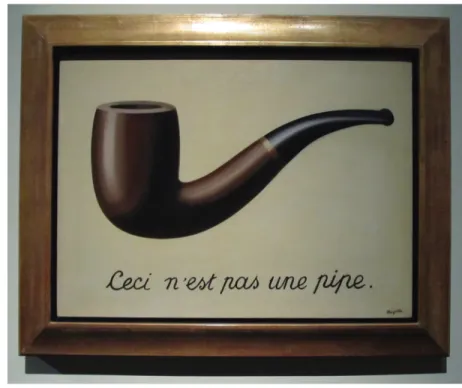Society has constructed an environment that erases and deforms queer bodies; because of this, as a young adult I struggled to see how my body and identity could exist in the world. Please don't try to shoot my legs like rats when I go to the bathroom in the middle of the night. Every day in high school I arrived, usually 5 minutes late, wearing the same outfit; jeans, t-shirt and a hoodie.
As a young adult, I could not see how my body and identity could coexist in the world. The queerness of my work reflects not an internal experience—such as the often, and rightly, maligned “born in the wrong body” narrative—but the ways in which queer experiences relate to society. In the second section, "Shapes," I will look at how these social systems are reflected in the physical and material presence of my work, consider the role of materiality in creating content, and address how the figure as a compositional form allows for these conversations .
From terkw- we get quer in German, meaning 'oblique or strange', and then in Scots in the 16th century we find queer, a term for. The figures, made of paper, collapsed due to rain, wind and perhaps even snow.
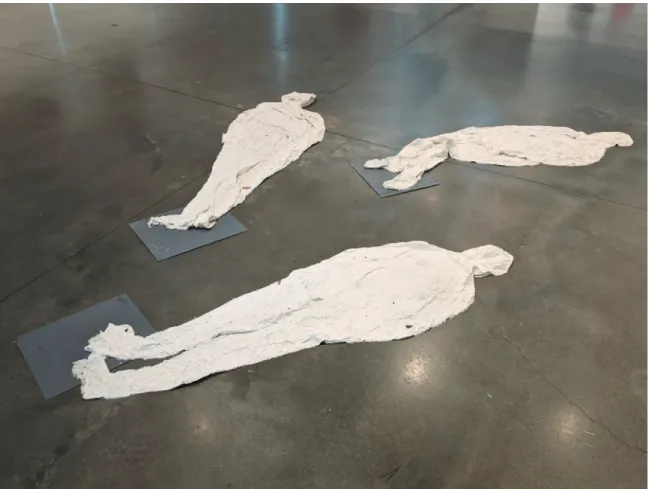
The Body & Self
Trans* bodies[..] do not simply function to provide an image of the non-normative against which normative bodies can be distinguished, but rather as bodies that are fragmentary and internally contradictory; bodies that remap gender and its relations to race, place, class and sexuality.” Using this history, I can similarly critique and undermine the use of the figure. Instead of the strength and durability of bronze statues, my work makes the figure a fragile and changeable form.
This form of 'holding' can be present in the ship in its current state, but can also be a reflection of the ship's history. For example, Enduration 1 - Courtyard, which we discussed in the previous section, reflects a history of the figure's relationship to space, even if it does not embody that relationship. The other, broader answer, therefore, is that the work represents the relationship of the self to the body.
The relationship of the self to the body is one of imperfection, as the body can never fully represent the entirety of who we are. This inability to represent the whole of oneself through the body can be seen in The Betrayal of Sex (fig. 2). All this contributes to the reading of the figure as a man, but painted in black vertically up on the right side of the photograph is the text "Ceci n'est pas un homme". Translated from French it means, "This is not a man."
Similarly, The Betrayal of Sex highlights the difference between the self-representation that the body performs and the totality of the self that cannot be conveyed. The image is not simply a description of a body, but that of a body that performs a kind of classical masculinity that is repeated by the history of the image. The idea of a separation between body and self can be seen as a renaming of the “born in the wrong body” narrative that I misused in the introduction, but there are distinct differences.
Moreover, the inherent limitations of the body as a representative form of the self do not make the body wrong.
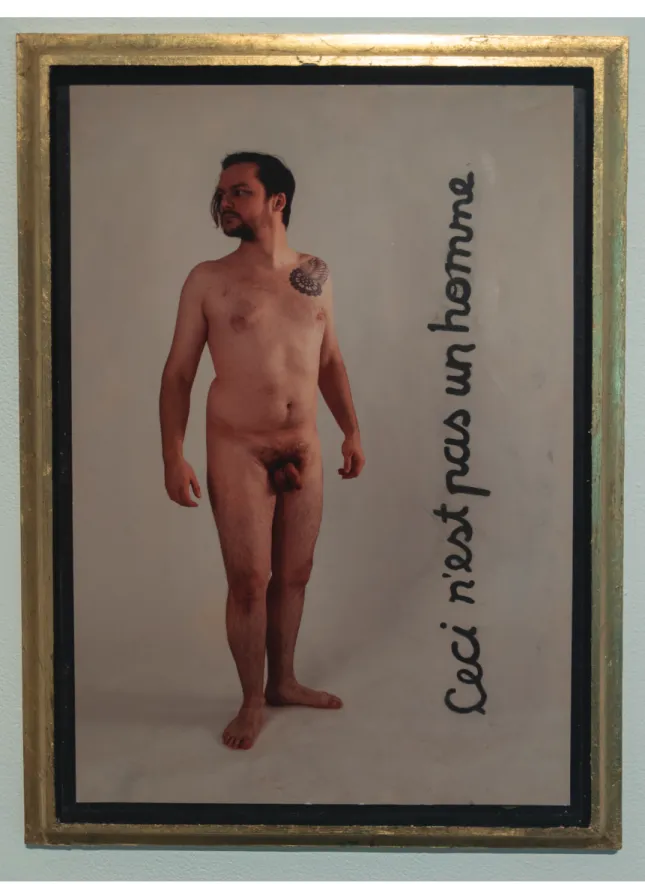
Society
The social worlds we inhabit[..] are not inevitable; they were not always bound to turn out this way, and moreover, in the process of producing this reality, many other realities, fields of knowledge, and ways of being have been discarded. Around the feet of the form are the scraps of wax paper, the glue wrappers that now adorn the body. Above the text are stacks of blank "Hello, my name is..." stickers and a black permanent marker.
The interactive element of the work asks the viewer to act out the social role of the figure. The feet and the lower part of the legs, on which only a few stickers are stuck, serve as a kind of synecdoche in the work. While the design generally conveys the girth and volume of the body, without the presence of feet, we can assume that the design is made entirely of sticker layers.
Instead, the bare feet lead us to infer that a whole figure is present; hidden by stickers applied to it. When the viewer places a sticker on the figure, they continue the abstraction and distortion of that individual. No person may be responsible8 for the figure's complete dehumanization, but the result occurs nonetheless.
8 Well, except me, the artist, because I put it in that situation in the first place.
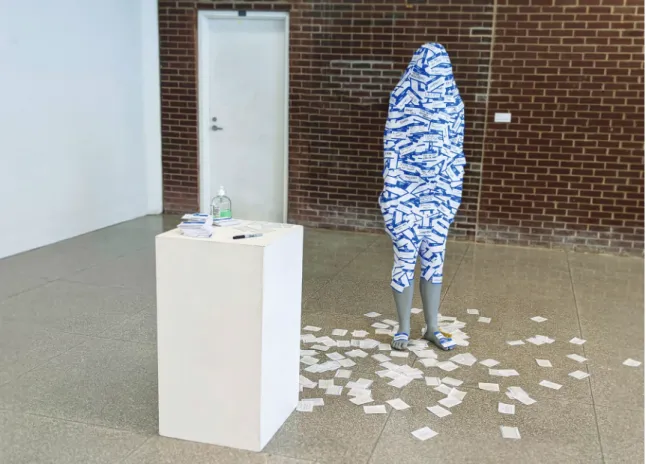
The Built
Environment
Bodies do not dwell in spaces that are external, but are shaped by their dwellings and are shaped by dwelling. Both states show the figure at odds with the space, either limply passive or bent and deformed by the space around it. Latex has sensitivity and responsiveness to the environment, which emphasizes the relationship of the figure with it.
An alternative approach to the built environment also appears in the section The Built Self (fig 6). At the base of this piece is a cast iron figure, modeled in a classical contrapposto position. As you scan up from the bottom, instead of the front torso and head of the figure, there is a rectangular corner-shaped space.
Bursting out of that space is a mass of disparate materials: steel, drywall, two-by-four lumber, spray foam insulation, chunks of concrete, and more. By using the materials of the built environment in the sculpture, I refer directly to its effect on the figure. In this case, the identifying features of the figure are surpassed by the mass and presence of materials that not only fill the space that would have been the face and front of the body, but expand beyond that space to extend the presence of the figure in relation to the built environment around. his.
We can compare this back to the Filling Space series where the body is separated from the built environment and is in conflict with it. As the built environment becomes part of the figure, that relationship becomes more complex, a back and forth in which the figure is shaped by the presence of the built environment, but at the same time shapes it in return. I use a wide variety of materials - as highlighted even just within the two works discussed in this section - and how I arrive at my material choices reflects my specific making process.
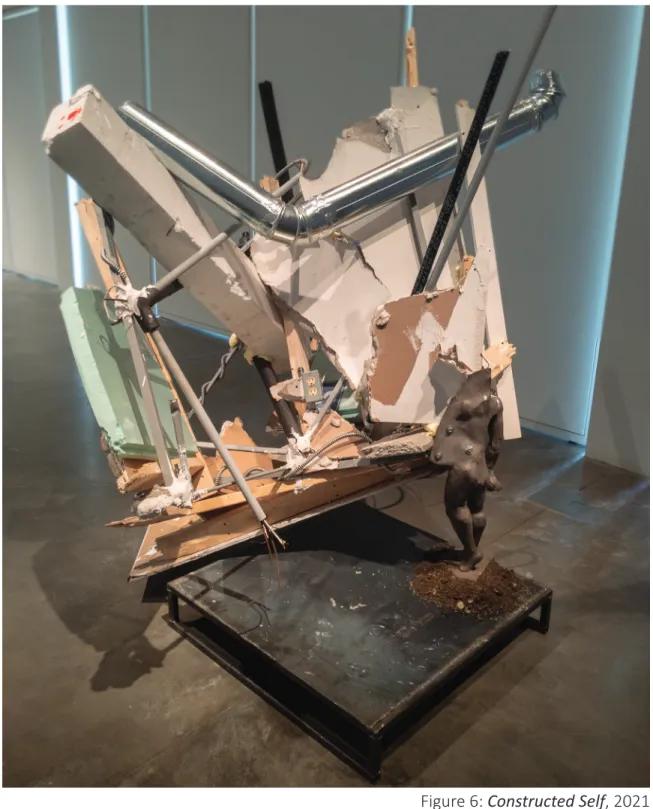
Materiality
Responsive materials are materials that change in relation to the environment in which I have placed them. They are chosen with the understanding that as materials they will change as a result of the conditions in which I place them, and that change is an integral part of the visual experience. Another place where you can see me using responsive material is on the Trace Body-Chalk sculpture.
At and on the figure's feet is a mass of chalk in different colors and occasionally a chalkboard eraser. Chalk markings on the surface of the body invite viewers to add their own drawings, writings or other scribbles on the figure's surface. In this case, the use of blackboard paint as a material causes the work to change within its environment – in this case through the interaction with the viewer.
Indigenous materials, on the other hand, reflect the environment in which I place them. Plasterboard, concrete and even spray insulation foam must relate the sculptural form to the built environment of which it is a part. Using these indigenous materials allows me to both focus on the way these forms differ from the environment, usually through their composition, while also relating the figure beyond itself as a singular object.
This use of material is quite evident in the previous section's discussion of the Constructed Self, but can also be seen with the piece The Subvert (fig. 7). Subvert is a wall made of concrete blocks; about 2/3 of the way through the wall, one brick at the base is tilted slightly out of line with the rest and it dis-. Using the native material of the wall, the foot creates a material affinity with its environment that is reflected back into that environment.
The figure's behavior is defined by materiality, but I think it's time to look again at what the figure's behavior in space really is.
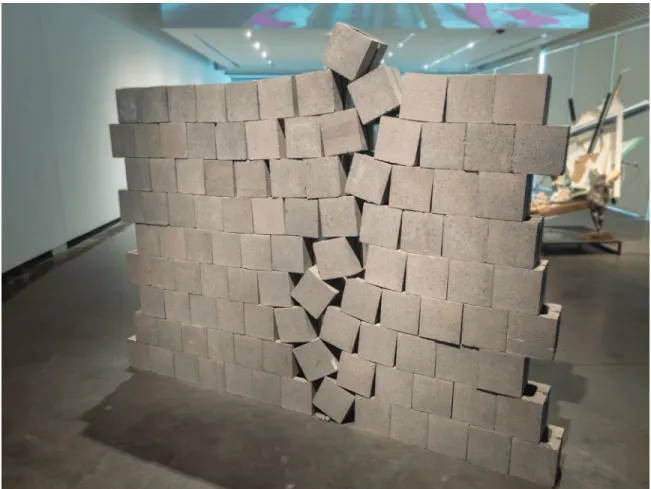
The Figure as Form
The statue's act of silence forces the viewer to negotiate the contours of power established between their moving body and the challenging, immobile one presented by the sculpture.”. This does not mean that the figure cannot reflect a sense of death or finality, but the empathy you feel for them is retained. The figure can move beyond a sense of mortality to become a record of an experience that could not be captured by a person.
Although the figure has no possibility of change, its immobility is an opposing presence. The inherent inaction that the painting represents is a refusal to participate in the environment that deforms it. This inactivity of the figure has a contrasting effect that invites the viewer to act.
Either in direct interaction with the figure – as was the case with the autopographic distortion – or indirectly through movement within the space, the stillness of the figures provokes action on the part of the viewer. While art cannot change its circumstances, the viewer can, and the presence of the figures is a provocation towards this.
Conclusion
Bibliography
